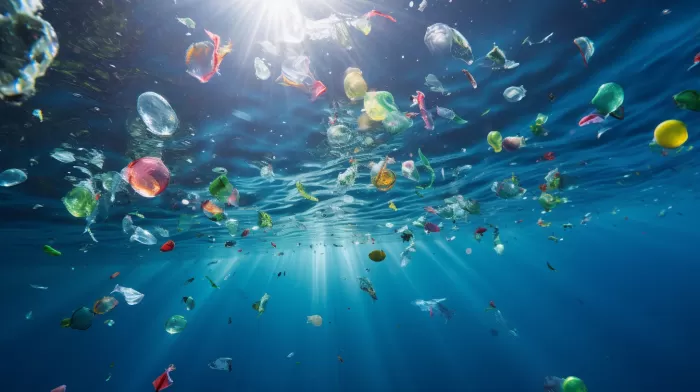The plastic pollution problem in our oceans may be far worse than initially believed. For years, researchers have estimated the amount of plastic in our oceans by skimming its surface, but the true extent of our ocean’s plastic problem may be hidden beneath the waves.
The Invisible Problem
Giora Proskurowski, a researcher at the University of Washington, made the surprising discovery that wind was pushing lightweight plastic particles below the surface of the ocean. By analyzing samples of water taken at a depth of 16 feet, Proskurowski and his team realized that the existing data from surface investigations may be severely underestimating the true volume of plastic debris.
In a study published in the Geophysical Research Letters journal, Proskurowski and co-lead author Tobias Kukulka of the University of Delaware, revealed that the data collected from just the surface of the water commonly underestimates the total plastic amounts by an average factor of 2.5. In high wind conditions, this number can reach up to a staggering 27 times less than the actual amount.
With such a margin of error being present in the current data set, it’s essential to understand the full scope of the problem. The researchers took water samples from depths of up to 100 feet and found microplastics in every sample at every depth.
The Impact of Plastic Pollution on Ocean Life
The growing plastic pollution issue causes severe harm to marine life in a variety of ways. One of the most obvious consequences is the ingestion of plastic by fish. When fish consume plastic particles, it can lead to liver problems, stunted growth, and even death.
Moreover, plastic pollution in the ocean provides an ideal environment for the growth of bacteria and harmful algae. This can potentially alter the entire ecosystem of the ocean, which, in turn, affects the entire food chain. If left unaddressed, this plastic pollution crisis will only grow, further impacting marine life, ecosystems, and human health.
What Can Be Done to Combat Plastic Pollution?
The discovery that plastic pollution extends far beyond the surface highlights the urgent need for comprehensive solutions. Putting an end to single-use plastics and promoting recycling programs are critical steps in the right direction.
Implementing more aggressive cleanup efforts is also crucial to addressing this overlooked problem. For example, innovative technologies such as The Ocean Cleanup can be used to efficiently remove plastic pollution from both the surface and depths of the ocean.
Additionally, increasing awareness about plastic pollution and its impact on ocean ecosystems is essential to encourage individuals, governments, and industries to take action. By providing educational resources and promoting conscious consumption, we can take the necessary steps to reduce and ultimately eliminate plastic pollution in our oceans.
Will Banning Plastics Solve the Problem?
Banning single-use plastics, while certainly a commendable step towards protecting our oceans, is only a small part of the solution. Plastic pollution comes in various forms, including microscopic particles from larger plastic items such as bottles, bags, and straws breaking down over time.
To fully address the issue of plastic pollution, a more comprehensive approach is necessary. This means supporting innovative solutions for plastic alternatives, developing more efficient recycling and waste management systems, and promoting conscious consumption to reduce the overall plastic footprint.
In conclusion, while plastic pollution in our oceans is undeniably a grave problem, there is hope. By acknowledging the full scope of the problem, taking decisive action, and implementing sustainable solutions, we can safeguard our oceans and their ecosystems for the future.



